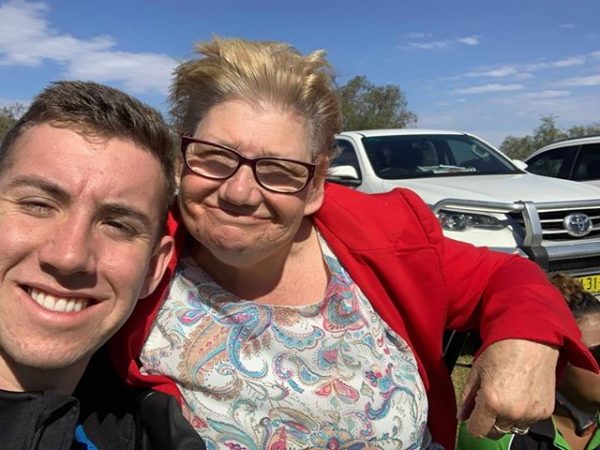
DISABILITY STATS
What is Disability?
A disability is any condition that restricts a person’s mental, sensory or mobility functions. It may be
caused by accident, trauma, genetics or disease. A disability may be temporary or permanent, total or
partial, lifelong or acquired, visible or invisible. See our page What is Disability for more information
– https://www.and.org.au/pages/what-is-a-disability.html
Demographics
Over 4 million people in Australia have some form of disability. That’s 1 in 5 people.
18.6% of females and 18.0% of males in Australia have disability.
The likelihood of living with disability increases with age. 2 in 5 people with disability are 65 years
or older.
1.8 million or 50.7 % of Australians aged 65 and over have disability, compared to 1 in 8 (12.5 %)
aged under 65.
2.1 million Australians of working age (15 – 64 years) have disability.
35.9% of Australia’s 8.9 million households include a person with disability.
Types of Disability
Only 4.4% of people with a disability in Australia use a wheelchair.
1 in 6 Australians are affected by hearing loss. There are approximately 30,000 Deaf Auslan
users with total hearing loss [1].
Vision Australia estimates there are currently 357,000 people in Australia who are blind or have
low vision. They project that the number of Australians who are blind or have low vision will grow
to 564,000 by 2030. (Refractive error not included). [2]
45% of Australians aged 16–85 years, experience a mental health condition during their lifetime.
[3]
3 million Australians live with depression or anxiety. [3]
Research shows job or financial loss can increase a person’s risk of health problems, such as
depression and anxiety. [4]
Employment of People with Disability
People aged between 15 and 64 years with disability have both lower participation (53%) and
higher unemployment rates (9.4%) than people without disability (83% and 4.9% respectively).
There are 2.1 million Australians of working age with disability. Of these, just over 1 million are
employed and another 114,900 are looking for work.
Australia’s employment rate for people with disability (46.6% in 2015) is on par with developed
countries. In developing countries, 80% to 90% of people with disability of working age are
unemployed, whereas in industrialised countries the figure is between 50% and 70%. [5]
34% of people with disability are managers & professionals.
Graduates with disability take 56.2 % longer to gain fulltime employment than other graduates.
[6]
People with disability aged 15-24 years are 10 times more likely to experience discrimination
than those aged 65 years and over.
The source of discrimination is an employer in almost half of those instances.
Global research has found that when employee health and wellness is managed well the
percentage of engaged employees increases from 7% to 55%. [7]
73 percent of employees who say they work at a “purpose-driven” company are engaged,
compared to just 23 percent of those who don’t. [8]
The quick self-assessment is a 10 question assessment for a glimpse into your organisations access
and inclusion for people with disability, and to gain an understanding of what the Access and Inclusion
Index is about. No information that identifies an organisation is collected as part of the Quick Self-
Assessment. Take a Quick Self-Assessment – https://accessandinclusionindex.com.au/…/quick-self-assess…/
Customers with disability
People with disability are three times as likely to avoid an organisation and twice as likely to
dissuade others because of an organisation’s negative diversity reputation. [9]
36% of people with disability are often treated less favourably than customers without disability.
[9]
28% of people with disability have experienced discrimination by one or more of the
organisations they’ve recently interacted with. [9]
1 in 3 people with disability report that their customer needs are often unmet [9].
62% of SME’s have not done anything in the past 12 months to make it easier for customers with
disability. For almost half of these, there is a perception of not being asked to. “We have received
no specific requests.” [10]
Other disability statistics
* The likelihood of living with disability increases with age; 31% of 55-64 year olds are living with disability.
* Almost nine in ten people aged 90 and over (88%) have a disability.
* Disability discrimination accounts for the highest volume of complaints across the board to the Australian
Human Rights Commission.
* Over one third (35.1%) of women and over one quarter (28.1%) of men aged 15 years and over had
avoided situations because of their disability.
* Projections for 2050 indicate that one in every four Australians will have hearing loss. 90% of people
born with hearing impairment are born into hearing families. [1]
* Some 639,300 people with disability used mobility aids (14.9% of those with disability).
* Almost 500,000 people had made home modifications such as grab rails (337,800 or 8.2% of those with
disability), modifying their bathroom, toilet or laundry (222,600 or 5.4% of those with disability) or
installing ramps (100,200 or 2.4% of those with disability).
Sources
Except where stated otherwise, data is taken from Australian Bureau of Statistics (ABS) 2016, 4430.0 – Survey of Disability, Ageing and
Carers 2015, viewed 24 February 2017.
[1] ‘Listen Hear! The economic impact and cost of hearing loss in Australia’ 2006, Access Economics, viewed 24 February 2017.
[2] Vision Australia estimate is based on ABS population data and ABS Survey of Disability Ageing and Carers.
[3] Australian Bureau of Statistics (ABS) 2008, 4326.0 – National Survey of Mental Health and Wellbeing: Summary of Results, 2007,
viewed 24 February 2017.
[4] Price, R.H., Choi, J.N. and Vinokur, A.D. 2002, Links in the chain of adversity following job loss: How financial strain and loss of
personal control lead to depression, impaired functioning, and poor health, Journal of Occupational Health Psychology, 7(4), 302-312.
[5] ‘Employment of persons with disabilities’ 2007, United Nations Department of Public Information, viewed 24 February 2017.
[6] ‘Grad Stats’, 2015, Graduate Careers Australia, viewed 24 February 2017.
[7] ‘Benefits to business: The evidence for investing in health and wellbeing’ 2011, ComCare, viewed 15 March 2017.
[8] Inc Magazine 2014, How a Sense of Purpose Boosts Engagement, viewed 15 March 2017.
[9] ‘Missing out: The business case for customer diversity’ 2017, Australian Human Rights Commission, viewed 15 March 2017.
[10] ‘2017 Disability Confidence Survey’ 2017, Australian Network on Disability, viewed 19 February 2018.
